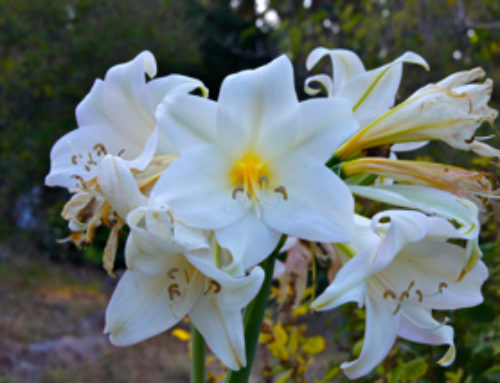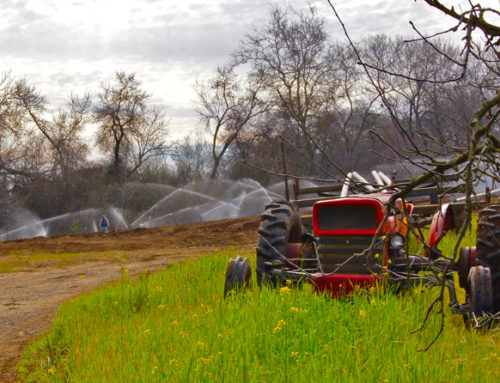Although the infamous Food Drought occurs during March, there’s still a lot happening in the orchards and fields. Here are some pictures of the various things that are in Spring bloom for you to enjoy. (Originally posted in March 2013)

The apricot trees are a riot of blossoms exploding like popcorn right now. Though we need more rain, keep your fingers crossed it holds off long enough for proper pollination and fruit set to happen.

We dream of a bumper crop of ‘cots this season since we haven’t had one in years.
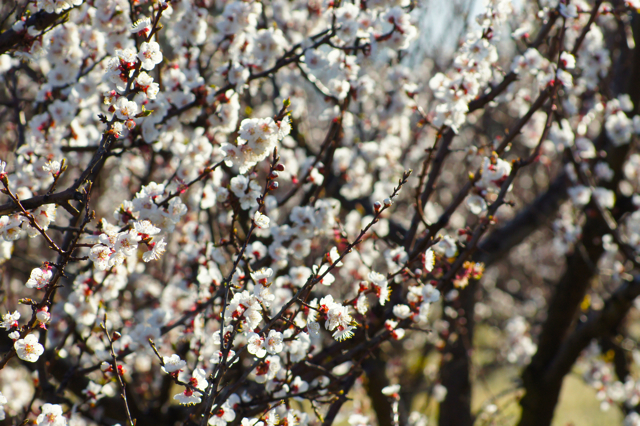
Apricots are self pollinating, which is why you won’t see many bees buzzing from blossom to blossom. The blossoms smell amazing though, and if we could, we’d add a scratch ‘n sniff to the picture for you.
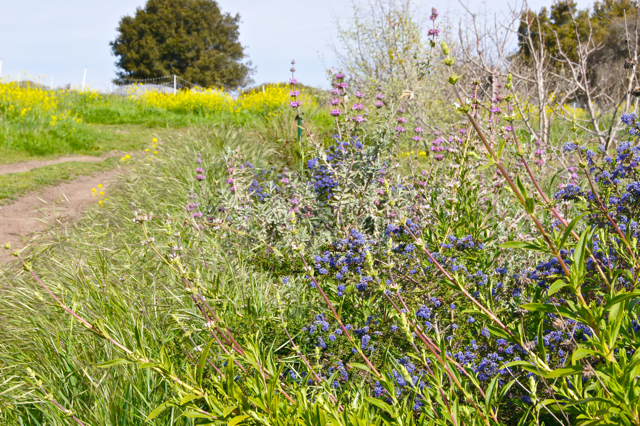
This is one of the many hedgerows planted on the Farm as part of a partnership with Wild Farm Alliance. This hedgerow contains ceanothus (California Lilac) and sage, among other native plants. There is a self-guided tour you can take that highlights more of these projects around the Farm.
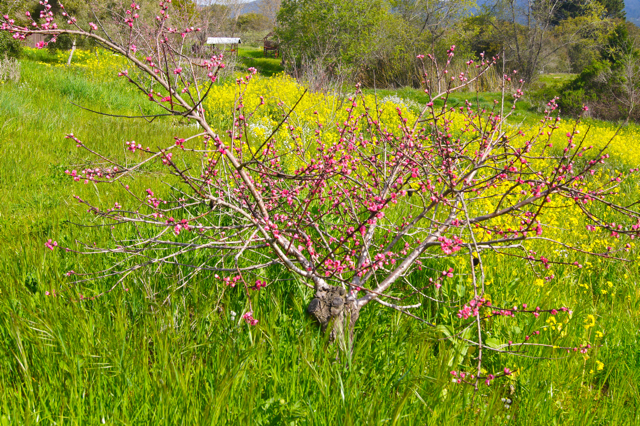
This beauty is one of the few peach trees on the Farm. We have few stone fruit trees since our coastal climate is too moderate for them to grow and produce well. They do much better in the inland valleys, like the San Joaquin, which get colder during the winter.
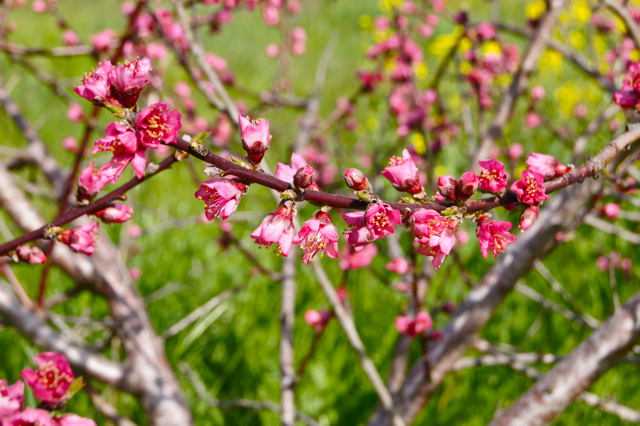
So close you can reach out and touch them.

The yellow of mustard blossoms is a common sight in the cover crops we plant to recharge the soil and control erosion during the winter. Here it is competing with rye.
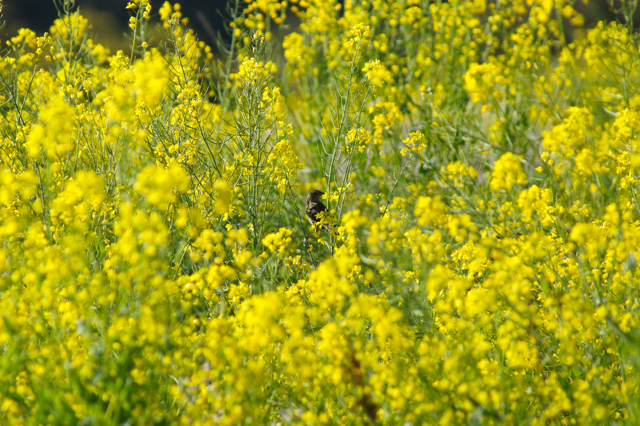
Mustard also provides cover and food for song birds during the winter. You may only see just the one, but you can be sure there are a dozen more hidden in there. They flutter and pop up like Jack in the Boxes as you walk past the fields.

Mustard, originally planted among apple trees that were removed (you can see some of the remaining ones at the top of the picture), has taken over this sloping field where we grew dry-farmed tomatoes during the last Regular Season. Mmmm … dry-farmed tomatoes. Is it August yet?
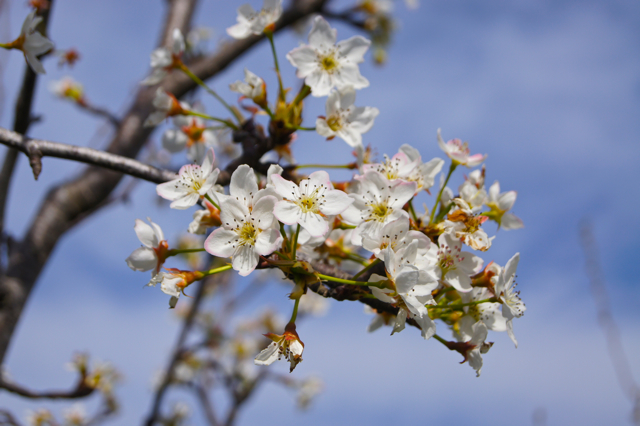
These are blossoms of an early blooming variety of pear tree. The trees that produce the Warren (French Butter) Pears that go in the shares have yet to bloom.
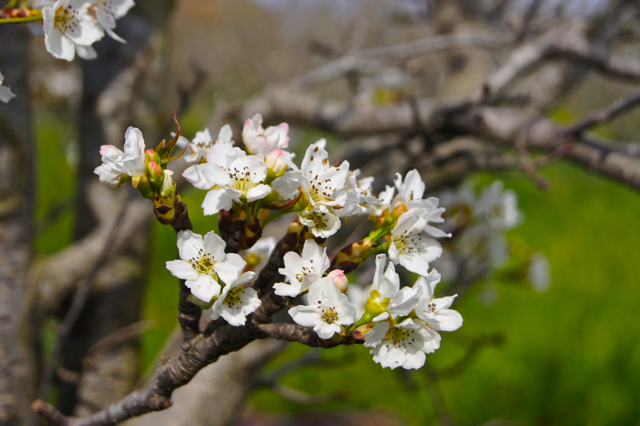
While pear blossoms look a lot like plum blossoms, there are differences. Notice the blush of pink at the tips of some of the petals and how dark the pollen is. Now, check out the plum blossoms in the next picture.

See how there’s no pink on the petals of these plum blossoms? The pollen is also yellow, rather than brown like on the pear blossoms above.
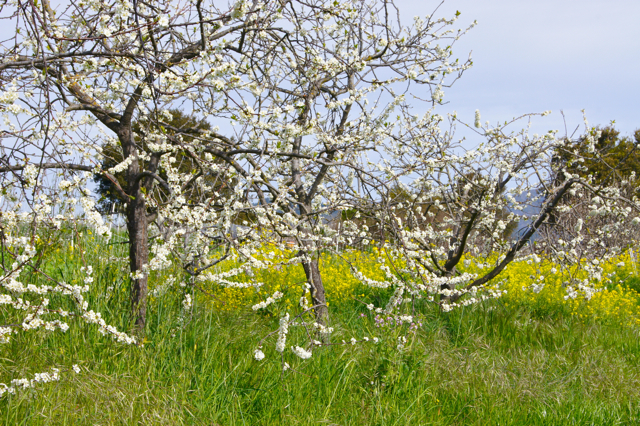
Plum trees have different growing patterns. Notice how the branches and trunks of these trees swoop around in curves.
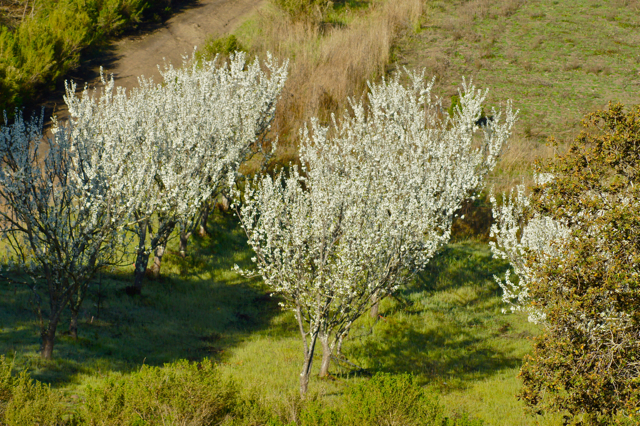
While these plum trees send their branches shooting mostly straight upwards.
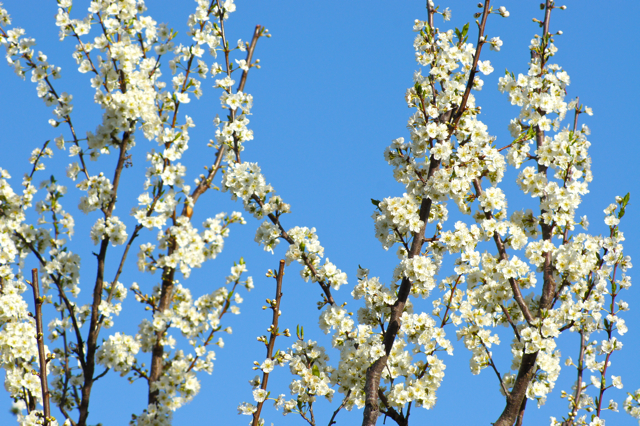
If you look closely, you can spot the places where the branches of this plum tree were pruned just a few weeks ago.
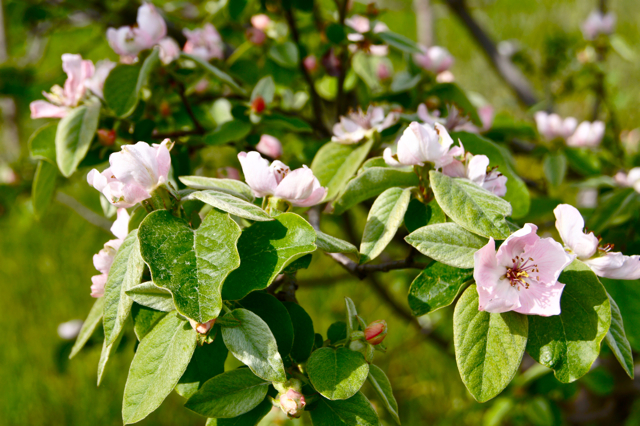
Quince trees make good root stock for pear trees to be grafted to, and that’s what these trees were originally planted for. Farmer Tom became fond of them, though, and decided to leave them as is. We’re so glad he did, because otherwise we wouldn’t have the quince candy (membrillo) their fruit gets turned into for us by Happy Girl Kitchen. This quince orchard is near Toasty 2, our cob oven that’s used during Community Farm Days to make things like pizza and apple tarts. Did someone just say, “Yum!”?
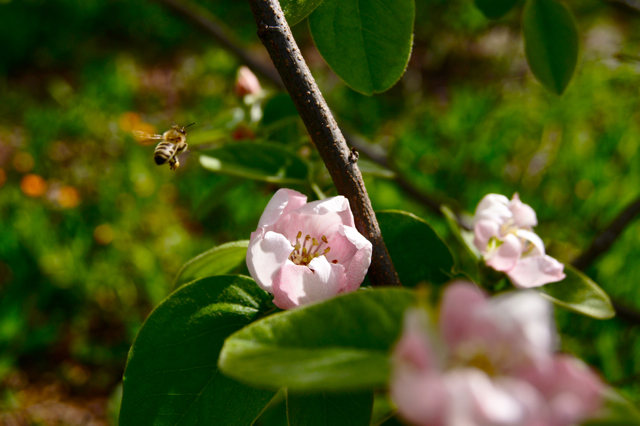
Unlike apricots, quince are not self pollinating, so it’s a good thing the bees love them. Here’s one coming in for a landing now.
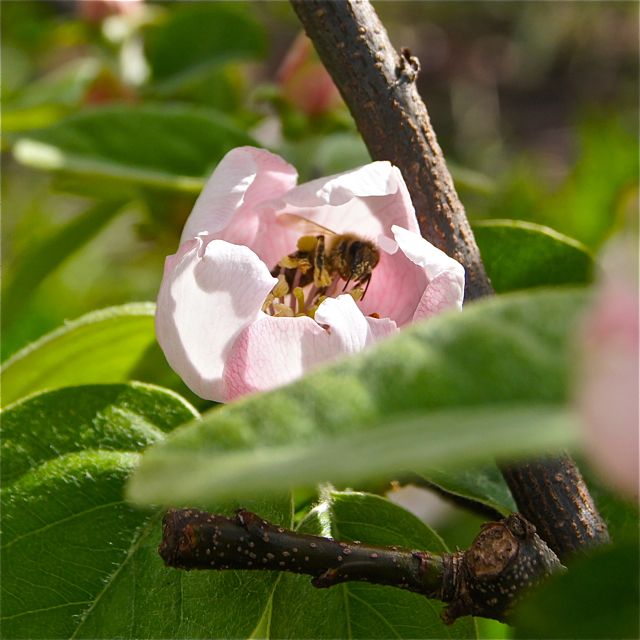
It’s great how the quince blossom acts like a cup to keep the bee inside as long as possible to ensure good pollination.
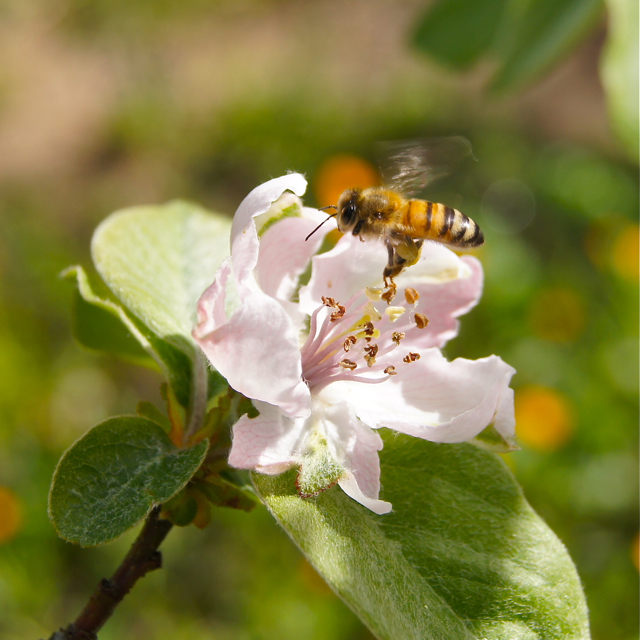
Notice the “peach fuzz” on the leaf below the blossom. This same fuzz covers the quince fruit itself which is pear shaped, so imagine a fuzzy pear and you’ll have a good idea of what’s to come after this bee does her job.
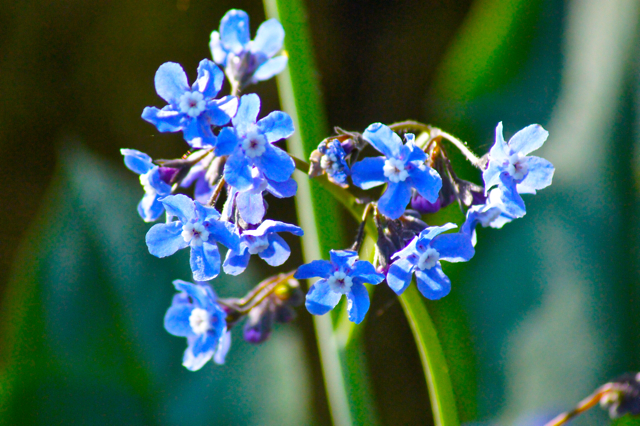
At the very back of the Farm is a short wild-land trail where native wild flowers like this Western Hound’s Tongue can be found growing under oak trees near groves of redwoods.
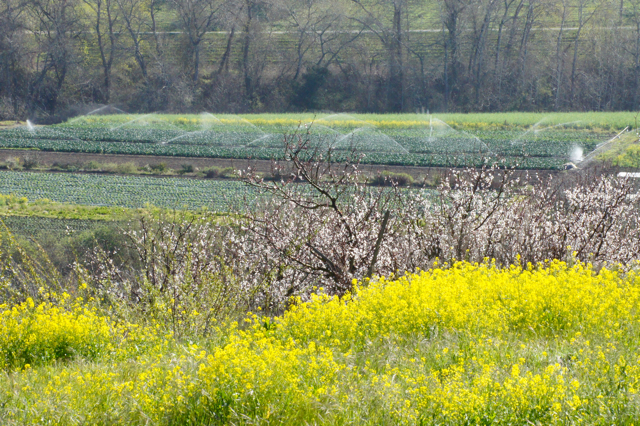
This picture captures a patch of mustard in front of one of our apricot orchards on a hillside above the lower fields where we are growing veggies that will soon be in your share box.
Community Supported Agriculture, whether receiving a share or going to a Farmers Market, is the best way to ensure a farm like ours thrives and continues to provide a place for natural organic diversity.


